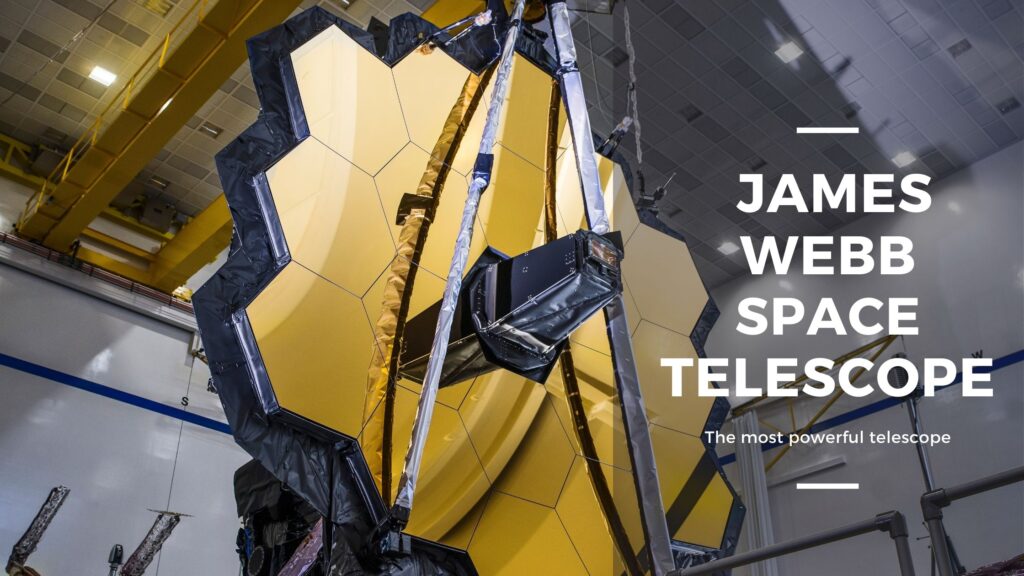The James Webb Space Telescope (JWST) will be the most powerful space telescope ever built, and it’s coming to the planet Earth soon! It was named after NASA scientist Dr James E. Webb, who played an integral role in the Apollo moon missions and the development of modern telescopes. The James Webb space telescope has been in development since 1996, and it’s set to launch in 2018 on an Ariane 5 rocket from Kourou, French Guiana, according to NASA’s website. So what exactly will this telescope do? Find out here!
Why We Need the James Webb Space Telescope

The James Webb space telescope will be able to peer further into deep space than ever before. Why do we need such a powerful observatory and what can it do for us here on Earth? Read more to find out! The Billion-Dollar Project: Since its inception in 1996, NASA’s been putting money into its successor to Hubble. As you may have guessed, that total has now exceeded $8 billion (yes, with a b). How does that compare to other projects of similar size or cost? Well, for starters… It puts it about six times above second place holder Japan’s $1.6 billion bullet train project.
But when compared to other space telescopes—such as Chandra, a similar-sized scope that was placed into orbit by India—it doesn’t seem like much at all. If you take inflation into account, NASA is spending far less than any country has on their flagship telescopes in history. So why so expensive? Where’s All That Money Going?: According to Dr Beth Willman, an astronomer who studies exoplanets and galaxy formation at Vanderbilt University, one reason for JWST’s high price tag is simply because of its purpose. To begin with, it was designed from scratch to look at infrared light—which means new technology had to be developed from scratch, too; those things don’t come cheap. And whereas previous big eye space telescopes could only track objects down within our Milky Way Galaxy, Webb needs to look thousands of galaxies over to see distant supernovae.
And just as engineers needed to design entirely new equipment, they also needed brand-new materials—ones that are not only light but also stiff enough for launch and flexible enough for deceleration without breaking under their weight. Nowadays, We Can Afford It: While $8 billion might sound like a lot of money to you or me, for comparison’s sake (and to put things into perspective), think back to 2006 when Congress allocated roughly $13.5 billion towards military operations in Iraq and Afghanistan—an amount which fluctuated between three and four times during President Obama’s time in the office alone.
How the JWST Works
The JWST’s primary mirror is made up of 18 hexagonal segments, each one measuring 2.2 feet (0.67 meters) across and weighing 1,000 pounds (454 kilograms).
The segments are made of beryllium and coated with gold to boost their reflectivity. These mirror segments need to be extremely flat—less than 25 nanometers of intolerance. That’s about one-thousandth of a hair’s width. Each segment also contains an intricate retroreflector array that bounces incoming light back towards its source; mirrors used by most telescopes on Earth are only reflective on one side.
The smaller size of the JWST’s mirrors means there will be no space for conventional instruments, such as spectrographs and cameras. Instead, these devices will have to be shrunk down in size so they can fit into a more compact unit known as a focal plane module. This module sits at one end of Webb’s giant tennis court-sized sun shield, which has been designed so it can extend from launch into orbit. #[1] This three-part honeycomb structure measures approximately 15 ft × 60 ft (4.5 m × 18 m), though it weighs just 600 lb (270 kg).
The honeycomb layer under which Webb’s main optics sit is made of graphite-epoxy composite. Graphite, like carbon fibre reinforced plastic (CFRP), comes in layers that form a very stiff yet lightweight structure. By contrast, epoxy adheres materials together without adding stiffness. One benefit of using graphite and epoxy is that both materials can withstand extreme temperatures; however, having two separate components creates another problem: how do you keep them clean? No telescope would ever reach space if it couldn’t deal with contamination, or particles floating around inside that would interfere with delicate observations or even damage critical instrumentation. So NASA used aerogel – a sponge-like substance derived from silica gel – to line almost every surface within Webb itself. Aerogel captures 99% of particles down to 0.3 microns in diameter – some 500 times smaller than a human hair.[2] Once everything’s secured, engineers load the spacecraft onto a rocket to begin its journey. Once it reaches orbit, mission controllers carry out a series of tests and checks before deploying Webb’s solar panels. In total, these panels stretch 65 ft (20 m) across when fully extended. After turning on scientific instruments and retracting additional hardware, including protective covers placed over sensitive hardware during transit, Webb should be ready for business.
When Will It Launch?
The James Webb Space Telescope (JWST) will be launched into space on an Ariane 5 rocket. The rocket is expected to launch from French Guiana in October 2018 and will be positioned at a point 1 million miles away from Earth. The telescope should be able to observe distant galaxies and detect signs of life outside of our solar system. After three weeks, it will begin operating at its full capacity, making it the most powerful space telescope ever built, according to NASA officials.
You can check where is the James Webb Space Telescope right now by just going to NASA’s website. Here is the link-
Why is it Called Webb and Not Telescope?
The telescope will be named after NASA’s second administrator, James E. Webb, who played a major role in Apollo and served as President Kennedy’s special assistant for science and technology during NASA’s formative years. It is now commonly known as Webb. The rest of us just call it the next big thing in space. The team has more than 400 scientists from 17 countries, including all of NASA’s space centres and numerous international partners. We want to bring all that we have learned from past missions—and our own experiences—to make JWST a global success story… Let me take you on a quick tour!
Who’s In Charge of All This Stuff Anyway?
The director of NASA, Jim Bridenstine, has called James Webb Space Telescope a national priority and he’s especially interested in seeing it get into space (he wants to see it flying in 2021, a date that some say is overly ambitious).
There are a few things you should know about Bridenstine. First, his main qualification for running NASA: He served in Congress representing Oklahoma; secondly, he doesn’t believe humans cause climate change. Oh yeah—he used to be a Navy pilot. So…yeah. With all that baggage, there have been concerns from lawmakers on both sides of the aisle about whether Bridenstine is fit to lead what everyone agrees is a massively important mission for scientific exploration. So far, no one seems likely to stand up and oppose him publicly or do anything concretely negative toward his nomination because he is supported by Texas Senator Ted Cruz and Florida Senator Marco Rubio among others who would like nothing more than another Texan at such an important post.
When Will It Operate Again, and Where from?
Originally, NASA said it would launch James Webb Space Telescope in October 2018, but due to some design issues, NASA announced that it would be pushed back again. The launch date for James Webb Space Telescope has been delayed to 2021, with 2018 now marked as a year of preparations and tests.
The telescope will be located at the L2 point between Earth and Sun, where light from our solar system is minimal; therefore less heat can get to it. This location also makes deep space observation possible. Although the James Webb space telescope won’t replace Hubble, its observations are expected to lead to discoveries we wouldn’t have seen otherwise. It will also be used to look into very early times in our universe and figure out if life exists outside of earth. The four primary mirrors on James Webb Space Telescope work like telescopes do today: there are four mirrors, known as primary mirrors, which form an effective aperture (opening) 36 meters across. Light gathers and focuses on an infrared camera and spectrograph housed inside a tennis court-sized box called the bus. Due to being farther away than any other spacecraft, JWST will be able to observe longer wavelengths than other existing or planned observatories. Light gathered by these mirrors passes through a piece of glass so thin it’s almost invisible — just 20 microns thick — before hitting another mirror.
Future of James Webb Space Telescope
The mission to replace Hubble is scheduled for launch in 2018. The new telescope will be able to see through dust, giving us a clearer view of black holes and galaxies that formed in our earliest universe. And that’s just one of its many missions.
So stay tuned, because it’s going to be an exciting few years. After launching into space atop an Ariane 5 rocket from French Guiana, the James Webb space telescope will hover around L2, 1 million miles away from Earth.
To make sure everything goes as planned during its 5-year lifetime in orbit (it has a 2-year warranty), we’ll need to test how well it operates in orbit for two whole years before we get observations underway.
Engineers have already begun putting together subsystem tests and simulating environments so they can ensure that when it comes time to turn on the cameras, things work properly. This will include exposing different parts of JWST to extreme temperatures(both cold and hot), to ensure that they function properly under different circumstances.
It’s unlikely any instruments or parts will fail due to environmental conditions while in orbit; however if they do fail, there are replacements available on the ground at Mauna Kea Observatory in Hawaii ready for replacement.
Also Read:
Let’s Have A Look Towards India’s Gaganyaan Mission • Scientific World (scientyficworld.org)







